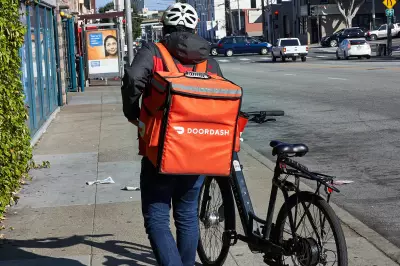What You Need to Know about the DoorDash Data Breach
Table of Contents
- Published: Nov 18, 2025
- Last Updated: Nov 18, 2025
Food delivery giant DoorDash recently suffered a cybersecurity incident that compromised sensitive customer and merchant information. Known for delivering everything from burritos to bubble tea across the United States and beyond, DoorDash confirmed that unauthorized actors accessed parts of its system in a recent data breach.
According to DoorDash, the breach was triggered by a social engineering attack that targeted an employee of the company. The tactic allowed attackers to access internal systems and contact-related information, including full names, email addresses, phone numbers, and physical addresses of consumers, delivery workers, and merchants. DoorDash insists that no financial information or government-issued ID data was accessed in the breach.
Upon the identification of the incident, DoorDash claimed to have had its response team shut down the unauthorized access, begun an investigation, and referred the issue to law enforcement. In addition, the company said it deployed new improvements to its security architecture to detect and prevent future malicious activities of this nature.
This DoorDash data breach is part of a growing pattern of cyberattacks aimed at service platforms holding large amounts of personal data. Other recent targets have included Uber and Ticketmaster. DoorDash suffered previous data breaches in 2019 and 2022.
When Was the DoorDash Data Breach?
DoorDash discovered the unauthorized access on October 25, 2025, but only publicly confirmed the incident in mid-November 2025.
How to Check if Your Data Was Breached
DoorDash began notifying users affected by the data breach in mid-November 2025 via the email addresses registered with their accounts. Hence, if your information was part of the breach, you should receive an official notification from DoorDash stating what data may have been compromised. Furthermore, you should check your email inbox, spam folder, and any associated merchant or Dasher accounts for messages from DoorDash.
If you have not received an email but suspect your contact details may have been exposed, you can also use third-party breach-monitoring services such as HaveIBeenPwned.com and AmIBreached.com. These tools allow you to enter your email address or phone number and check if it has appeared in any publicly known data breaches.
What to Do If Your Data Was Breached
If you were notified by DoorDash or you suspect your information may have been leaked in the breach, you should consider taking certain protective steps.
Start by closely monitoring your email, text messages, and calls for unsolicited or suspicious communications. Attackers may use stolen contact details to send messages pretending to be DoorDash, banks, or delivery services. Always confirm the identity of the sender before clicking links or downloading attachments, and never provide personal information through unexpected emails or messages.
You should also stay alert for any DoorDash follow-up updates, as the company continues working with law enforcement and cybersecurity experts. Therefore, additional notifications may be sent as the investigation progresses or if new information becomes available.
Are There Any Lawsuits Because of the DoorDash Data Breach?
No class action lawsuits have been publicly filed against DoorDash in connection with the recent data breach. However, some legal firms have indicated that they are monitoring the situation and may investigate on behalf of individuals whose data was exposed.
Can My DoorDash Information Be Used for Identity Theft?
Although the DoorDash data breach did not expose passwords, Social Security numbers, or payment-card details, the compromised information can still pose identity-related risks.
Cybercriminals may use these details in phishing or social engineering attacks, impersonating DoorDash, financial institutions, or delivery services to trick individuals into sharing more sensitive information, such as login credentials or banking details.
Knowing your full name, physical address, and contact details can allow bad actors to create targeted scams, reset accounts that do not use multi-factor authentication, or exploit weak verification processes used by some service providers.
What Can You Do to Protect Yourself Online?
You can protect yourself from online data breaches by taking the following steps:
- Change Your Email Passwords: Even though no passwords were leaked, attackers may still try credential stuffing using your email address. If you reuse the same password across multiple sites, consider updating it.
- Enable Two-Factor Authentication (2FA): Activate 2FA on accounts that support it, especially email, financial, and food delivery platforms. This provides an extra security layer even if someone has your email or phone number.
- Watch for Phishing and Scam Messages: Phishing attacks often follow breaches. Be wary of emails or texts claiming to be from DoorDash asking for access credentials or payment information. Do not click links or download attachments unless you are sure the message is legitimate. Check for unusual sender addresses or misspellings.
- Monitor Account Activity: Regularly review your email, food delivery, and e-commerce accounts for unfamiliar login attempts or password reset requests. If you see anything unusual, update your passwords immediately.
- Set Up Credit Monitoring or Fraud Alerts: Even though no Social Security or financial data was compromised, consider setting up credit monitoring, fraud alerts, or even a credit freeze through services like Experian, Equifax, or TransUnion, especially if your home address was part of the breach.
Manage Unwanted or Suspicious Emails: Mark suspicious messages as spam, and unsubscribe carefully, only from verified sources, to avoid clicking malicious unsubscribe links.














